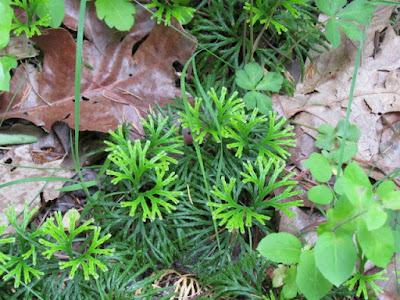The garden season is in full force, and I’m excited to hear about all the food and community gardens happening in our area. As we begin growing food and other plants this summer, please consider some potential health hazards.
A growing concern
in urban soils is lead contamination, though suburban
and rural soils may also be contaminated. I recently partnered with the Peoria
City/County Health Department to highlight the importance of avoiding lead
contaminated soil during the gardening season.Forest Hill Community Garden in Peoria, IL
Some garden soil contains high levels of lead that can pose a serious health risk. The risk can be from contaminated garden soil brought into the house on clothing, shoes, tools, or clinging to vegetable crops. Soil becomes mixed with house dust that is inhaled or ingested, resulting in lead poisoning. Roots crops (carrot, radish) are more likely to contain high lead levels than fruiting (tomato, pepper) and leafy (lettuce, spinach) vegetables. The harmful effects of lead poisoning can cause lifelong problems such as learning disabilities, behavioral problems, and lower IQ
Gardeners can reduce the risk of lead poisoning by following safe gardening recommendations. A good start is with a soil test to determine if the soil is contaminated with harmful lead levels. Garden soils can be contaminated with lead found in old house paint, old lead plumbing pipes, or old leaded automobile fuel. The greatest lead concentration is in the top 1 to 2 inches of soil.
Soil samples should be taken from several areas to determine the location of the contamination. Sample children’s play areas and vegetable gardens separately. With a trowel or shape, take several soil samples from within the chosen area. Combine the samples together, break up clods and mix the f soil thoroughly.
Use about one pint of the soil mixture as a sample to send for testing. Discard the remainder. Send samples to a soil testing lab with a special request for lead testing. Be sure the lab you choose does lead testing.
Gardeners can reduce the risk of lead poisoning from lead contaminated soils by growing food crops in raised beds. Covering ground at the bottom of an eight-inch high raised bed with landscape fabric, then fill with a good potting mix. Avoid using chemical treated lumber.
More information on how to grow food safely in the home vegetable garden is found on the University of Illinois Extension Lead in Soils Resources website. In addition to a Lead in Garden Soils factsheet, there is also information on soil testing, soil labs, general gardening, other soil contaminants, and more.
Published in Canton Daily Ledger Column on 6-17-2017










